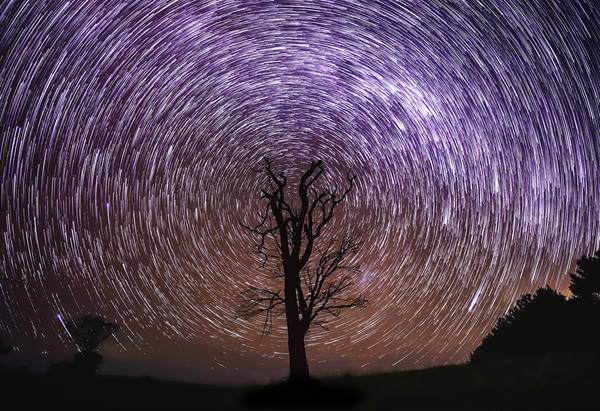- Astrophotography Time-lapse Tips from Matthew Vandeputte
-

The rapture of peering off into the universe is undeniable. So it’s not surprising that Astrophotography—when done well—has the power to stop you in your tracks. When you add motion to the mix—in the form of time-lapse—the output is even more spellbinding.
On our Facebook page, we often get questions about how to do Astrophotography. So we asked Matthew Vandeputte to share some of his top tips.
What are the basics of Astrophotography?
Firstly, make sure the sky above you is dark enough. You need to remove yourself from areas with light pollution—i.e. cities—and make sure there’s no moon around.
You also need a sturdy tripod, a fast lens and a remote shutter release. If you don’t have a remote, you can use a delayed shutter to minimise camera shake instead. If your lens has image stabilisation turn that off before shooting. Use live view to zoom into the stars and manually focus to make sure your output is sharp.
To bring some additional interest to your image try adding some visual elements to your foreground. I look for spectacular trees to use as silhouettes. You can also add a human element to the frame, and by using a flashlight you can add some light painting elements.
For astrophotography time-lapses, you can use a remote shutter release or use the in-built intervalometer if available.
What gear do you use for Astrophotography?
Good motion controi equipment. Sturdy tripods are a must and a remote shutter release like the TC-80N3 would be ideal.
A DSLR (or two) for their long-lasting battery life. You're better off shooting two sequences at the same time.
A range of fast lenses - I use the EF 16-35mm f2.8L III and EF 35mm f1.4L II. These lenses perform extremely well ‘wide open’—the biggest possible aperture opening, to let in the maximum amount of light. I like having different focal lengths to set up different views of the Milky Way at the same time. A shot at 16mm looks vastly different to one at 35mm.
What camera settings do you use for Astrophotography?
There’s no one-size-fits-all approach to Astrophotography settings. It depends on the conditions you’re shooting in. I use manual mode, an aperture of f/2.8—or wider if I can—around 20 seconds exposure, with ISO 6400. This should give you lots of stars in your shot. I usually set my white balance to fluorescent, and then do colour grading later in post processing.
Keep the '500 rule’ in mind. The longer your focal length, the faster you will get small trails of light, instead of pin sharp stars. This is because of the Earth’s rotation. Your focal length divided by 500 is—in theory—your maximum exposure time. For example on a 24mm lens, the ideal exposure time for sharp stars would be 500/24, approximately 21 seconds.
What camera settings do you use for Astrophotography time-lapses?
You need lots of individual images to make up a time-lapse sequence. And because Astrophotography images are long-exposures, you end up with an extremely long sequence to shoot for Astrophotography time-lapses. I recommend shooting at least 250 photos per sequence, which will result in 10 seconds of video footage at 25 frames per second.
Always add a three second buffer between stills to make sure you don’t miss any shots in the sequence, which would result in little jumps in the footage. Adding the three-second buffer gives us 18 seconds per photo. Repeated 250 times gives us 4,500 seconds, or 1 hour and 15 minutes for the single time-lapse sequence.
For the individual images, start by using the same image settings I mentioned earlier for Astrophotography and tweak as needed. Keeping the stars sharp is one of the hardest parts of Astrophotography.
How do you get the focus right?
There’s a couple of ways to do it. One way is to point the camera at a bright star or the moon, and use the autofocus.
The other is to turn on your live-view, zoom in 10x using the magnify button, and manually focus the lens until the stars in the shot are at their smallest. You’ll notice that focusing to either side of ‘totally in focus’ results in blurry or bokeh-looking stars.
Join a Canon Astrophotography workshop to learn more about Astrophotography.

Astrophotographer Matt Vandeputte shares tips on the best camera gear and settings to use when capturing the magic of the night sky.

Dr. Chris Brown journeys to Northern Japan for the ultimate test in low light performance – astrophotography with the EOS R and RF lenses. Check what he captures in this 24-hour challenge

Professional time-lapse photographer and filmmaker Matthew Vandeputte got his hand’s on the K406 before the rest of the world. What he created will open your eyes.